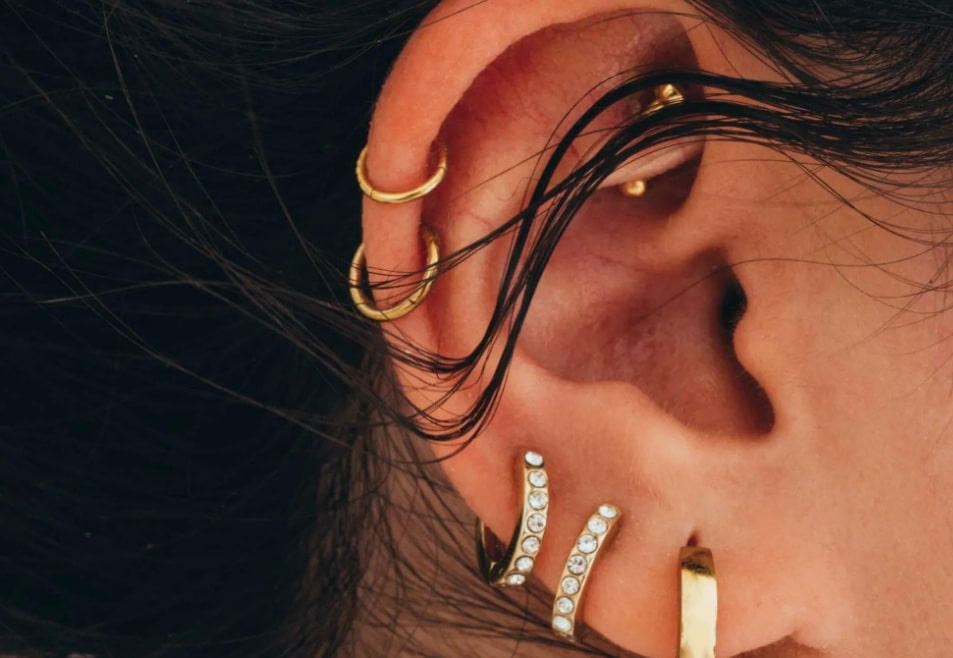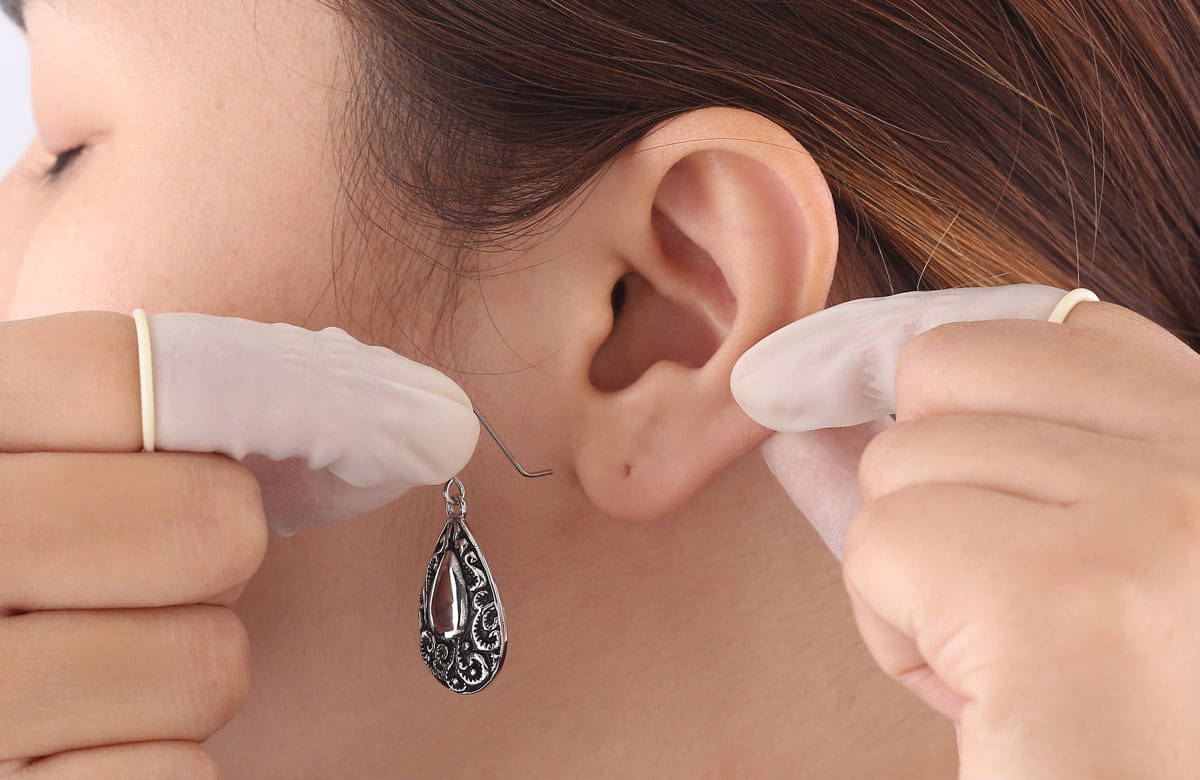Changing your earrings for the first time after getting your ears pierced is an exciting moment, but it's crucial to ensure your ears are fully healed to avoid complications. Knowing when can you change earrings after piercing and how to safely switch your earrings is essential for maintaining healthy piercings. This guide will help you understand the healing stages of an ear piercing, how long before you can change earrings, the risks of premature changes, and aftercare tips for newly pierced ears. Join us as we dive into more details.

Ear piercings go through several healing stages, and understanding these can help you care for your piercings properly and know how long to wait to change earrings after piercing.
Immediately after piercing, your body begins the healing process. The initial healing stage lasts about 1-2 weeks. During this period, the pierced area may be swollen, red, and sore. This stage is critical for preventing infections and complications. Clean the piercings twice daily with a saline solution or an antiseptic recommended by your piercer.
The intermediate stage can last from 4 to 6 weeks. During this time, the piercing starts to heal from the outside in, creating a new layer of skin around the jewelry. The area may still be sensitive, but there should be less swelling and redness. It's essential to avoid any trauma to the piercing, such as tugging or sleeping on it, as this can delay healing.
The final healing stage typically lasts from 3 to 6 months for earlobes and up to a year for cartilage piercings. At this stage, the piercing should be mostly healed, but the tissue inside is still maturing. Even if the outside appears healed, it's crucial to be gentle and cautious when handling the piercing to prevent any setbacks in the healing process.
Since we know the different healing stages of an ear piercing. So how long until I can change my earrings? Can I change my earring after 1 week at the quickest? The appropriate time to wait before changing your earrings depends on the location of the piercing and your individual healing process. Here are general guidelines for how long after piercing can you change earrings:
For earlobe piercings, it is generally recommended to wait at least 6 weeks before changing your earrings. This period allows the outer skin to form and start the internal healing process. Even if the piercing appears healed on the outside, waiting the full 6 weeks helps ensure the inside tissue is stable enough to handle the change.
Cartilage piercings, such as those on the upper ear, require a longer healing time due to the denser tissue. It's advisable to wait at least 3-6 months before changing earrings in cartilage piercings. Cartilage heals more slowly and is more prone to complications like infections and bumps, so patience is key.
If you still don't know when can I change my earrings, refer to the signs below:
- No Pain or Swelling: The piercing site should no longer be painful or swollen.
- Normal Color: The area should return to its normal skin tone without redness or discoloration.
- No Discharge: There should be no discharge, crusting, or signs of infection.
- Easy Movement: The earring should move freely within the piercing without resistance.

Now we know the guidelines of how long after piercing can you change earrings. Actually, changing your earrings too soon can lead to several complications, which can extend the healing time and cause discomfort. Some common risks are as follows:
One of the most significant risks of changing earrings prematurely is infection. Incomplete healing leaves the piercing vulnerable to bacteria. Signs of infection include redness, swelling, pain, warmth, and discharge. Infections can be serious and may require medical treatment.
Premature changes can disrupt the healing process, leading to delayed healing. This can cause prolonged discomfort and increase the risk of developing scar tissue or bumps around the piercing.
New piercings can close very quickly if the jewelry is removed too soon. The hole can begin to close within minutes to hours, making it difficult to reinsert the earring and potentially causing damage to the tissue.
Changing to a different material before the piercing is fully healed can cause irritation or allergic reactions. Nickel allergies are common, so it's important to choose hypoallergenic jewelry such as surgical steel, titanium, or 14k gold for the first change.
Proper aftercare is crucial for healing and preventing complications. Here are some essential tips:
1.Cleaning Routine: Clean your piercings twice daily using a saline solution or an antiseptic recommended by your piercer. Avoid using alcohol or hydrogen peroxide, as these can be too harsh and delay healing.
2.Hands Off: Avoid touching or twisting the earrings unless cleaning them. Handling the earrings with unclean hands can introduce bacteria and cause infections.
3.Sleeping Position: Try to sleep on your back to avoid pressure on the new piercings. Using a travel pillow with a hole in the center can help keep pressure off the ears while you sleep.
4.Avoid Submersion: Avoid submerging your piercings in water, such as in swimming pools, hot tubs, or lakes, as these environments can harbor bacteria and increase the risk of infection.
5.Choose the Right Earrings: When you are ready to change your earrings, choose hypoallergenic materials like surgical steel, titanium, or 14k gold to minimize the risk of allergic reactions and irritation.
Now you know when can you change your earrings after piercing. Changing your earrings for the first time is an important step in the healing process. Understanding the healing stages, waiting the appropriate amount of time, and following proper aftercare can ensure a smooth transition and maintain the health of your piercings. By being patient and attentive to your body's signals, you can enjoy your new earrings without complications.
No, you should not change your earrings immediately after getting pierced. It's essential to wait at least 6 weeks for earlobe piercings and 3-6 months for cartilage piercings to ensure proper healing and avoid complications such as infections, delayed healing, or closure of the piercing.
You should clean your earrings and piercings twice daily for the first few weeks after getting pierced. After the initial healing period, clean them regularly, ideally once a week, to prevent the buildup of oils and bacteria and maintain hygiene. Always use a saline solution or a gentle antiseptic for cleaning.
The earlobe piercing is generally the fastest to heal among the different types of ear piercings. The typical healing time for an earlobe piercing is about 6 to 8 weeks. This is because the ear lobe has good blood circulation and minimal cartilage, which facilitates quicker healing compared to cartilage piercings. In contrast, piercings in other parts of the ear have a longer healing time depending on the exact location and individual healing rates.
Explore the history of hoop earrings, their enduring popularity, diverse styles & significant impact on today's fashion trends. Discover their timeless charm.
Read MoreLearn how to fix a broken hoop earring of different causes & essential tips to keep your earrings safe and intact. Get your favorite earrings back in shape fast!
Read MoreLearn how to make hoop earrings with our DIY guide. Discover materials, tools & customization tips to create unique designs. Start crafting your own earrings now!
Read MoreWhy are my earrings turning black? Discover the causes, solutions & expert tips to keep your earrings shining. Learn simple ways to maintain beautiful earrings.
Read More